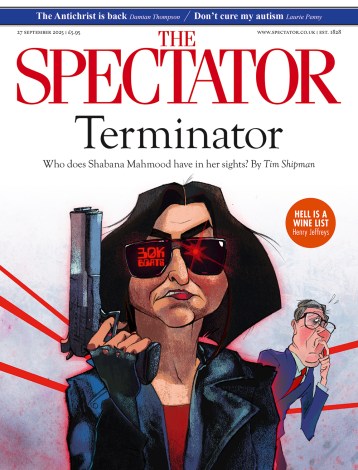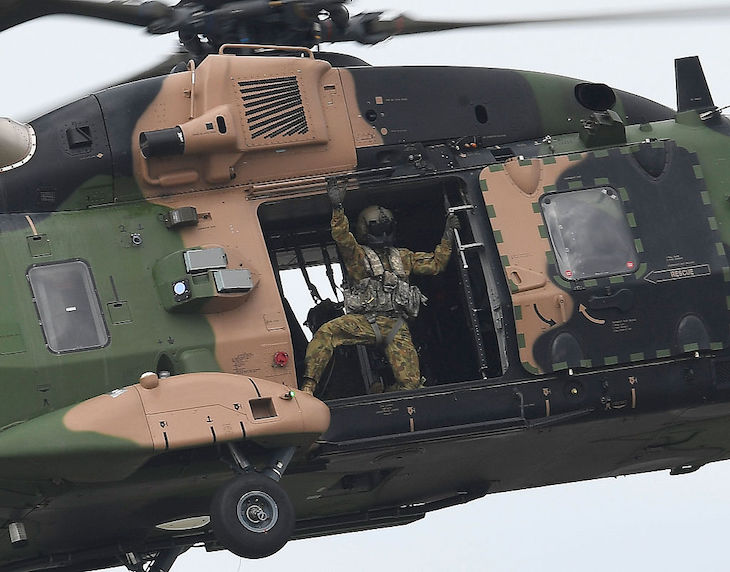What do you do if you have dozens of combat helicopters you don’t want? If you’re the Australian government, you dismantle them and turn them into landfill. That’s the imminent fate of 45 Australian Army and Royal Australian Navy MRH-90 Taipan helicopters, grounded since a crash in Queensland last summer and withdrawn from service.
Australia has had something of a troubled history with its European-UK designed MEH-90s, the Taipan being an adaptation of the NH-90 type currently in service with a number of Nato countries. Severe procurement and operating cost blowouts, mechanical failures, high maintenance costs, difficulty in obtaining spare parts, and several whole-fleet groundings have plagued the aircraft. Australian military authorities were also disappointed with the helicopter’s operational fitness for purpose, particularly their capacity for carrying sufficient fully-laden combat troops, was another black mark against the Taipan.
There was one taker for the decommissioned Taipans, willing to take them despite safety fears: Ukraine
The final straw came last July when one crashed into the sea off the Great Barrier Reef while on exercise, killing all on board. Even though the formal inquiry into the crash has not yet reported, last month the current Australian government announced its predecessor’s planned replacement of Australia’s Taipans with American Blackhawk and Apache helicopters is being accelerated. The troubled helicopters ‘will not return to flying operations’ before their scheduled withdrawal date of December this year, it said.
NH Industries (NHI), which manufactured the helicopters, insists that its NH90 transport helicopter remains safe to fly. ‘NH Industries has already informed operators that it has not identified any information from the initial flight-data analysis that relates to a failure, malfunction or defect linked to the aircraft design,’ the manufacturer says.
But Australia has made up its mind. Having sounded out other operators of the type and finding no takers, Anthony Albanese’s Labor government confirmed that the aircraft will be dismantled, and those parts which could not be sold on would be buried in a secret location.
But actually there was one taker for the decommissioned Taipans, willing to take them as they are and despite Australia’s safety and operational concerns: Ukraine. Desperate for helicopters to continue their fight against Valdimir Putin’s Russia, after Australia’s announcement Ukraine requested the Taipans be reprieved from destruction and donated to them.
In Australia, Ukrainian community organisations support the Zelensky government’s request. An organiser of a rally in Sydney last Sunday, Anton Bogdanovych, said:. ‘Our assessment of risk is different (to the Australians’): we’re at war’. The Australian Broadcasting Corporation reported the co-chairman of the Australian Federation of Ukrainian Organisations, Kateryna Argyrou, as saying the Russian federation has complete air superiority over Ukraine, and that if those 45 Taipan helicopters could end up on the Ukrainian front line, it would go a very long way to help Ukrainians fight for freedom and democracy.
But no. The Australians are determined to turn the decommissioned Taipans into landfill. On Tuesday, Australia’s Defence Industry minister, Patrick Conroy, said:
‘Some months after that process began, Ukraine made a formal request for the MRH‑90s. It will require considerable taxpayers’ money and time to get those aircraft back into flying conditions. And I should also make the point that there are multiple crash investigations still going on right now to determine the cause of that tragic (July 2023) accident in Queensland. So, it would be irresponsible for us to move away from the disposal strategy that we’ve locked on in.’
When journalists asked why the demolition of the Taipans couldn’t be ‘frozen’ until it was certain there was no feasible disposal alternative, Conroy added: ‘We’ve made it clear, there are no other willing buyers…this disposal strategy offers the best value for taxpayers’.
Yet the Ukrainian-Australian activists have a point. If the government of their homeland wants Australia’s unwanted Taipans, and is willing to accept the Taipans’ risks and failings, surely that’s aid-in-kind the Australian government could consider. Given the fleet was operational as recently as last July, presumably those Taipans not yet dismantled or cannibalised could be back in flying condition quickly and cheaply.
On the other hand, it’s very understandable that the Australian government – which under both conservative and Labor administrations has a proud record of material and logistical support for Ukraine’s existential struggle against Putin – does not want to donate helicopters to Ukraine that it is convinced are unreliable and unfit for purpose. No reputable second-hand car dealer wants to stand accused of knowingly selling lemons to their customers: this is no different.
But if those unwanted helicopters are provided to Ukraine on a strictly caveat emptor basis, and the Ukraine government and military are willing to both accept the balance of risks, and formally absolve the Australians from any consequent responsibility, why can’t those helicopters be reconditioned and donated to the anti-Putin cause?
It’s a tough call, but on balance Australia should at least freeze its demolition plan and consider Ukraine’s request seriously before its unwanted Taipan helicopters become landfill.






Comments